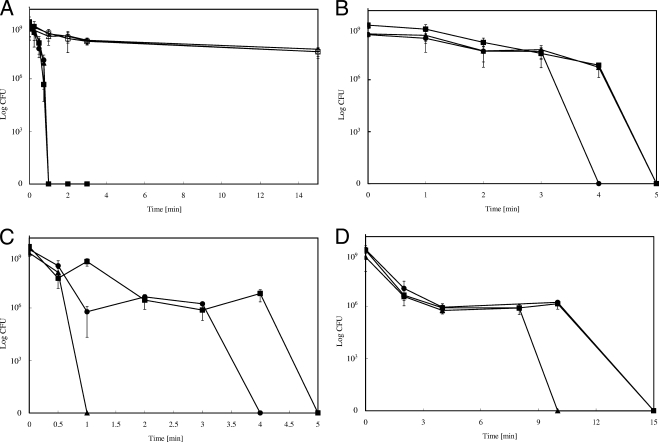FIG. 1.
Survival of copper-resistant or -sensitive E. coli strains on copper surfaces and those of its alloys and stainless steel. Cells of E. coli wild-type strain W3110 (▪), its copper-sensitive derivative GR17 (ΔcopA Δcus ΔcueO) (▴) or W3110(pPA173) harboring the high-level copper resistance system Pco (•) were streaked on copper alloy surfaces (filled symbols) or stainless steel (open sympols). After the indicated time periods at ambient conditions (23°C [A, C, and D] or 5.5°C [B]) cells were removed from metal surfaces, diluted, and plated on LB agar. Surviving cells were counted as CFU after 16 h at 37°C. The alloys were pure copper (C11000, 99.9%) (A and B), “nickel-silver” (C75200, maximum of 62% Cu) (C), Muntz metal (C28000, maximum of 62% Cu) (D), and stainless steel (AISI 304) (A). Shown are averages with standard deviations (error bars) from three independent experiments.

